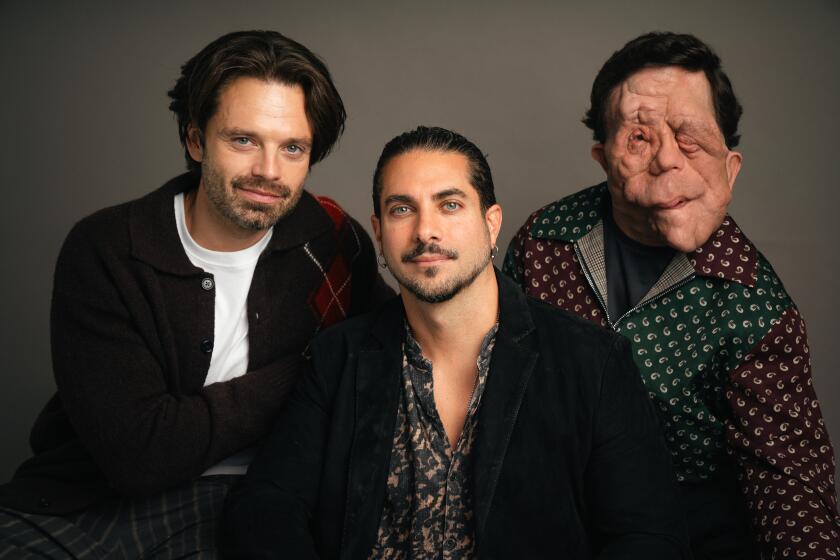Pioneering women filmmakers are celebrated in new DVD box set
A century ago, female filmmakers were a powerful force in Hollywood.
No, that’s not a misprint. Despite the ongoing battle to create opportunities for female directors, progress in this area has been slow. But in the early days of the studios, a number of women gained prominence as directors.
In fact, Lois Weber was one of the top directors at Universal Studios, and in all of Hollywood, in the early decades of the 20th century. Studio chief Carl Laemmle described her as his “best man on the lot.”
She wasn’t the only female filmmaker at Universal. Weber’s peers included Cleo Madison, Ida May Park, Ruth Ann Baldwin, Elsie Jane Wilson, Ruth Stonehouse and Lule Warrenton. Some 170 films were helmed by women at the studio from 1914-1919.
Several female filmmakers worked outside of Hollywood as well. French filmmaker Alice Guy-Blaché, who is considered the first female director, built her own company, Solax, in Fort Lee, N.J. Marion E. Wong founded the Mandarin Film Company in Oakland. And scrappy Angela Murray Gibson operated the Gibson Studios with her sister Ruby in Castleton, N.D.
After World War I, though, female filmmakers faded from view and became hidden figures in film history books. That is, until the last two decades when, slowly but surely, the contributions and artistry of these women — especially Guy-Blaché, who began making films in 1896, and Weber — have emerged from the shadows.
Now Kino Classics is shining the spotlight on several of these early female directors in its recently released six-disc DVD/Blu-ray set “Pioneers: First Women Filmmakers.” The collection, which recently received a special award from the New York Film Critics Circle, was executive produced by actress and filmmaker Illeana Douglas and is curated by Shelley Stamp, professor of film and digital media at UC Santa Cruz and author of “Lois Weber in Early Hollywood.”
All the films have been digitally restored by Kino Lorber from original archival sources; the discs also include documentaries, commentary and new scores.
Stamp said that whenever she screens these films, women always ask why they didn’t know about these pioneers before now. “It’s not that there haven’t been female filmmakers. We’ve been told a particular kind of history — that movie making is a guy’s game.”
What is striking about many of these early filmmakers is that they worked in a very collaborative way. “They even sometimes moved from acting to writing to directing and back,” Stamp said. “When they got to directing, they collaborated with screenwriters and directors who were pioneers in this field. Lois Weber mentored women who were acting for her and then went on to directing. There’s a lot of that kind of collaboration.”
Part of that, she added, included collaborating with male partners. Weber collaborated with her husband Phillips Smalley for many years, as well as Guy-Blaché, whose husband was filmmaker Herbert Blaché.
“But there was a reflex to credit the men,” she said. “In Weber’s case, it was to credit her films to her husband. What I discovered going back and reading the original press about Weber and Smalley’s films is that it was very evident to critics at the time that once they began making features that they were her films. They would even say things like “Why is Smalley being credited when it’s clearly Weber’s work. So, it’s not that people didn’t know at the time; it’s that, in retrospect, people projected this idea of male author and his female helper onto what was actually a different situation.”
When Universal City opened, said Stamp, there was an election for mayor. “Weber ran on an all-female ticket for all the municipal positions in the city,” said Stamp. “This campaign was mocked relentlessly in newspapers all over the country. But Universal, to its credit, said, ‘No, this is something that we value. We are a studio that has women with both beauty and brains running the place. We’re really proud of that fact.’ This was 100 years ago.”
And a century ago, Weber was considered a peer of D.W. Griffith and Cecil B. DeMille. She even had the No. 1 box-office film of 1916, “Where Are My Children?,” a melodrama dealing with abortion and birth control.”
“It’s very hard for us to imagine a situation where Universal’s top moneymaker is a film written and directed by a woman about abortion and birth control,” said Stamp. “Universal wouldn’t green light that picture today.”
Douglas, who noted that the term feminism was coined back in 1913, found it fascinating to look back at the industry’s view of women. “Hollywood, to me, was obviously a very progressive, bohemian place. Originally, they hired women hoping to cultivate women to go to the movies. And it worked.”
Stamp noted that female directors worked in every genre — comedy, western, action-adventure, melodrama and social problem films.
Douglas said studios and producers today are reluctant to hire female directors for movies that aren’t considered “women’s films.” “The best thing to do to thwart that is to go back in history and use all of these examples of female filmmakers in the silent era. That was my inspiration for wanting to see these films because the more evidence you have, the harder it is to not hire a woman in the present day.”
So why did the majority of female filmmakers disappear from behind the camera after World War I?
Before the war, Hollywood was “incredibly open to lots of people,” said Stamp. “It’s relatively easy to get a foothold in the early industry. What happens in the late 1910s and early ‘20s is that the industry isn’t very profitable and power starts to consolidate in the Hollywood studios — the studios that survive today.”
Power was also consolidated by the studio-buying national theater chains (a practice later ruled illegal by the courts). “It becomes very hard for independent companies to distribute the films because the studios are controlling the theater chains,” said Stamp. So, it’s that point in the early ‘20s that several independent companies run by women collapse because they can’t get distribution deals.”
Because the studios borrowed money from Wall Street, “they also bought into the male corporate culture and didn’t value the work of women,” Stamp said. “They didn’t value the female audiences. They didn’t value women who were making films and writing films. As a result, they began to rewrite almost immediately the history of Hollywood as a male-driven industry.”
She admired Weber, who continued working into the late 1920s, and Guy- Blaché for continuing to fight this narrative to the end of their careers
“Weber in the late ‘20s talks in interviews how different it is for her on the set at that point as a woman,” Stamp said. “How male crews don’t respect her anymore. She writes columns disputing when male studio heads say women shouldn’t be directors. She writes syndicated newspaper columns saying ‘No, we need more female directors.’ “
More to Read
Only good movies
Get the Indie Focus newsletter, Mark Olsen's weekly guide to the world of cinema.
You may occasionally receive promotional content from the Los Angeles Times.











